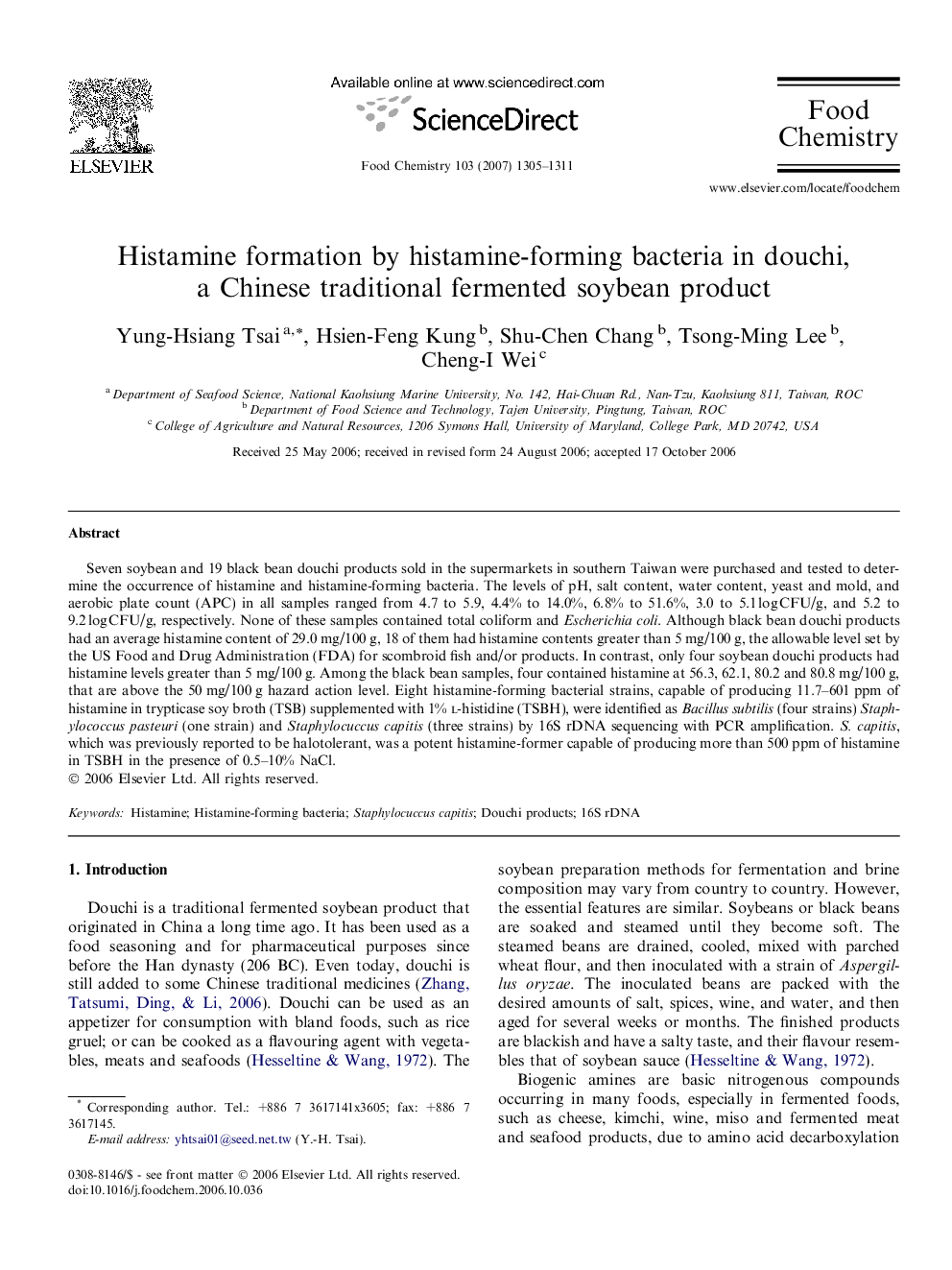| Article ID | Journal | Published Year | Pages | File Type |
|---|---|---|---|---|
| 1190340 | Food Chemistry | 2007 | 7 Pages |
Seven soybean and 19 black bean douchi products sold in the supermarkets in southern Taiwan were purchased and tested to determine the occurrence of histamine and histamine-forming bacteria. The levels of pH, salt content, water content, yeast and mold, and aerobic plate count (APC) in all samples ranged from 4.7 to 5.9, 4.4% to 14.0%, 6.8% to 51.6%, 3.0 to 5.1 log CFU/g, and 5.2 to 9.2 log CFU/g, respectively. None of these samples contained total coliform and Escherichia coli. Although black bean douchi products had an average histamine content of 29.0 mg/100 g, 18 of them had histamine contents greater than 5 mg/100 g, the allowable level set by the US Food and Drug Administration (FDA) for scombroid fish and/or products. In contrast, only four soybean douchi products had histamine levels greater than 5 mg/100 g. Among the black bean samples, four contained histamine at 56.3, 62.1, 80.2 and 80.8 mg/100 g, that are above the 50 mg/100 g hazard action level. Eight histamine-forming bacterial strains, capable of producing 11.7–601 ppm of histamine in trypticase soy broth (TSB) supplemented with 1% l-histidine (TSBH), were identified as Bacillus subtilis (four strains) Staphylococcus pasteuri (one strain) and Staphylocuccus capitis (three strains) by 16S rDNA sequencing with PCR amplification. S. capitis, which was previously reported to be halotolerant, was a potent histamine-former capable of producing more than 500 ppm of histamine in TSBH in the presence of 0.5–10% NaCl.
